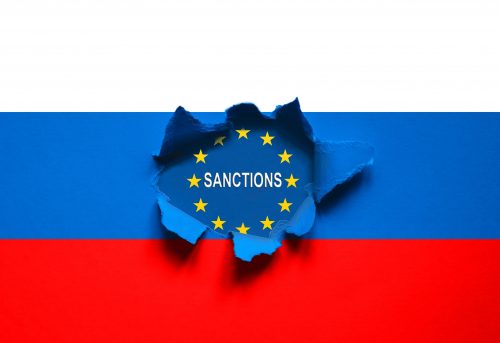 New restrictive measures targeting Russia have been introduced since 30 September 2023[1]: Like the existing European sanctions on Russia, these new restrictive measures are meant to weaken Russia’s economic base by depriving it of critical markets for its products, significantly curtailing its ability to wage war.
New restrictive measures targeting Russia have been introduced since 30 September 2023[1]: Like the existing European sanctions on Russia, these new restrictive measures are meant to weaken Russia’s economic base by depriving it of critical markets for its products, significantly curtailing its ability to wage war.
As of September 30, 2023, there is a prohibition on directly or indirectly importing or purchasing the iron and steel products listed in Annex XVII to Regulation 833/2014 that undergo processing in a third country and incorporate these products that originate in Russia listed in Annex XVII, including, amongst others:
- iron, iron wire, and bars;
- rolled products, pipes, and pipe fittings;
- iron and steel elements.
This import ban applies to products originating in or exported from Russia, regardless of the final destination of the goods (meaning that it is irrelevant whether the goods are destined for the EU or not), under the following terms provided in Regulation 833/2014:
- September 30, 2023: all Annex XVII products other than those classified under CN codes 7207 11, 7207 12 10, and 7224 90;
- April 1, 2024: Annex XVII products containing products classified under CN code 7207 11;
- October 1, 2024: Annex XVII products containing products classified under CN codes 7207 12 10 and 7224 90.
Article 3g of Regulation 833/2014 requires an importer at the time of import to be equipped with proof of the country of origin, other than Russia, of steel items used for processing a product in a third country. As explained by the Italian Customs Authority, if documentation is checked, scanner controls are performed, or goods are inspected, operators may then be required to provide proof of the country of origin of steel items used for processing a product in a third country.
The European Commission published a FAQ on the subject that delves into issues concerning the import, purchase, and transfer of the listed goods and explains application of Articles 3g, 3i, and 3o of Regulation 833/2014.[2] The third item in the FAQ points out that the restrictions in Articles 3g, 3i, and 3m of Regulation 833/2014 do not apply to goods that are already released for free circulation in the European Union (which usually means they have already been placed on the market) at the time the relevant measure becomes applicable.
Also the Italian Customs and Monopolies Agency has issued several sets of guidelines for applying the above restrictions,[3] indicating that the origin of the production elements can be proved not only through mill test certificates but also by other means, such as a declaration from the exporter or manufacturer that the product to be imported does not contain steel or iron originating in Russia. Among other means that may be used alone or in combination: invoices, delivery notes, supplier declarations—including supplier declarations relating to multiple shipments (long-term supplier declarations)—business correspondence, descriptions of production, quality certificates, and clauses in purchase orders or executed contracts, provided that they include information on the origin of the production elements used. The kind of document may vary depending on the nature of the product.
[1] See article 1 para. 12 of Council Regulation (EU) No. 2023/1214 of last June 2023 which amended Article 3g of Regulation (EU) No. 833/2014 concerning restrictive measures in view of Russia’s actions destabilizing the situation in Ukraine.
[2] Imports, purchase and transfer of listed goods. [last access: October 16, 2023].
[3] See Notices of September 22 and October 6, 2023.


